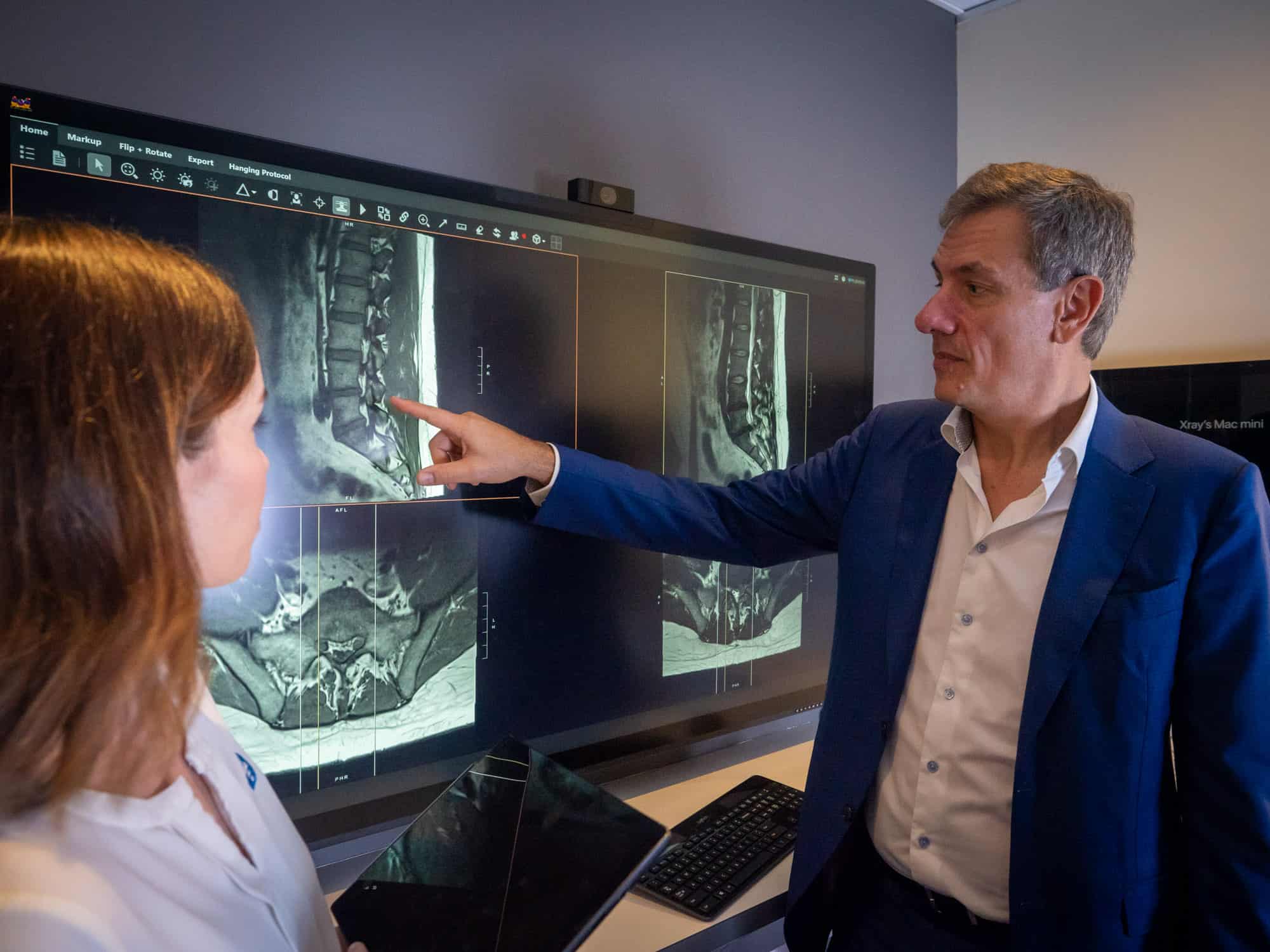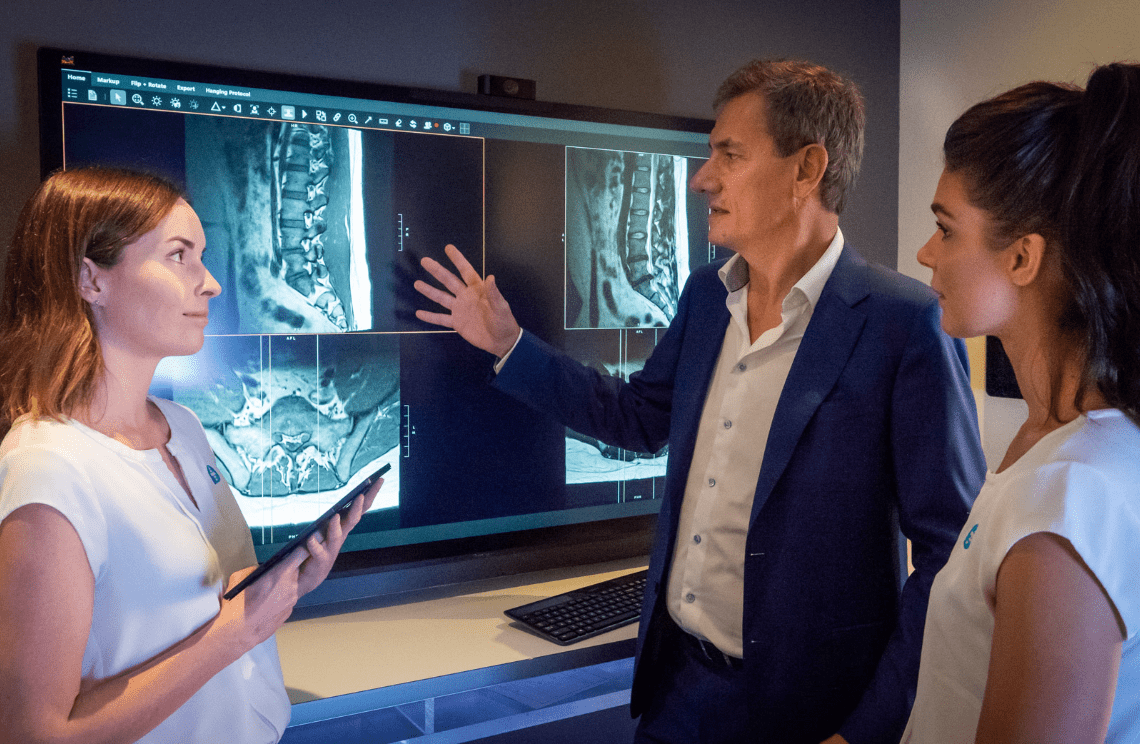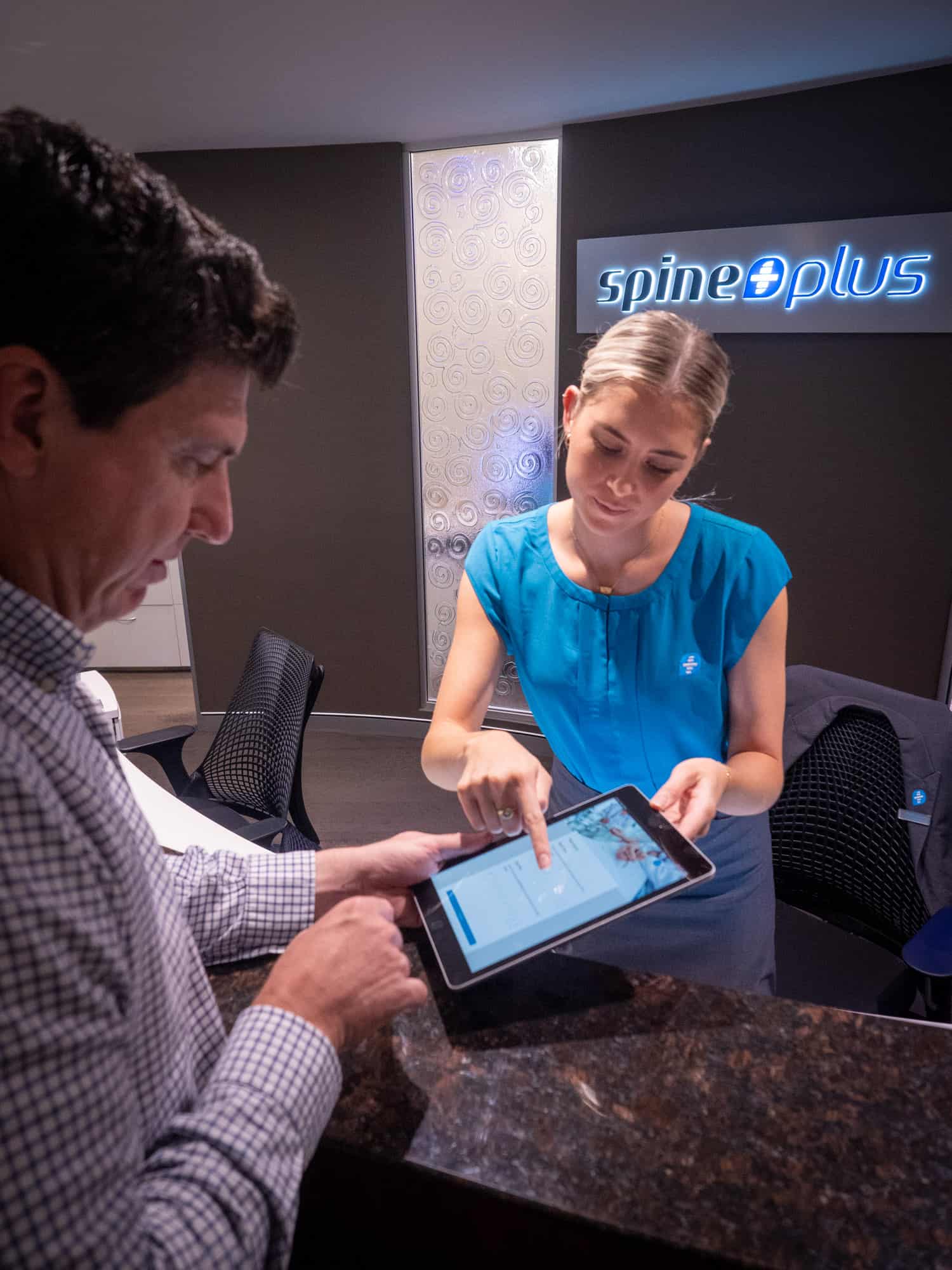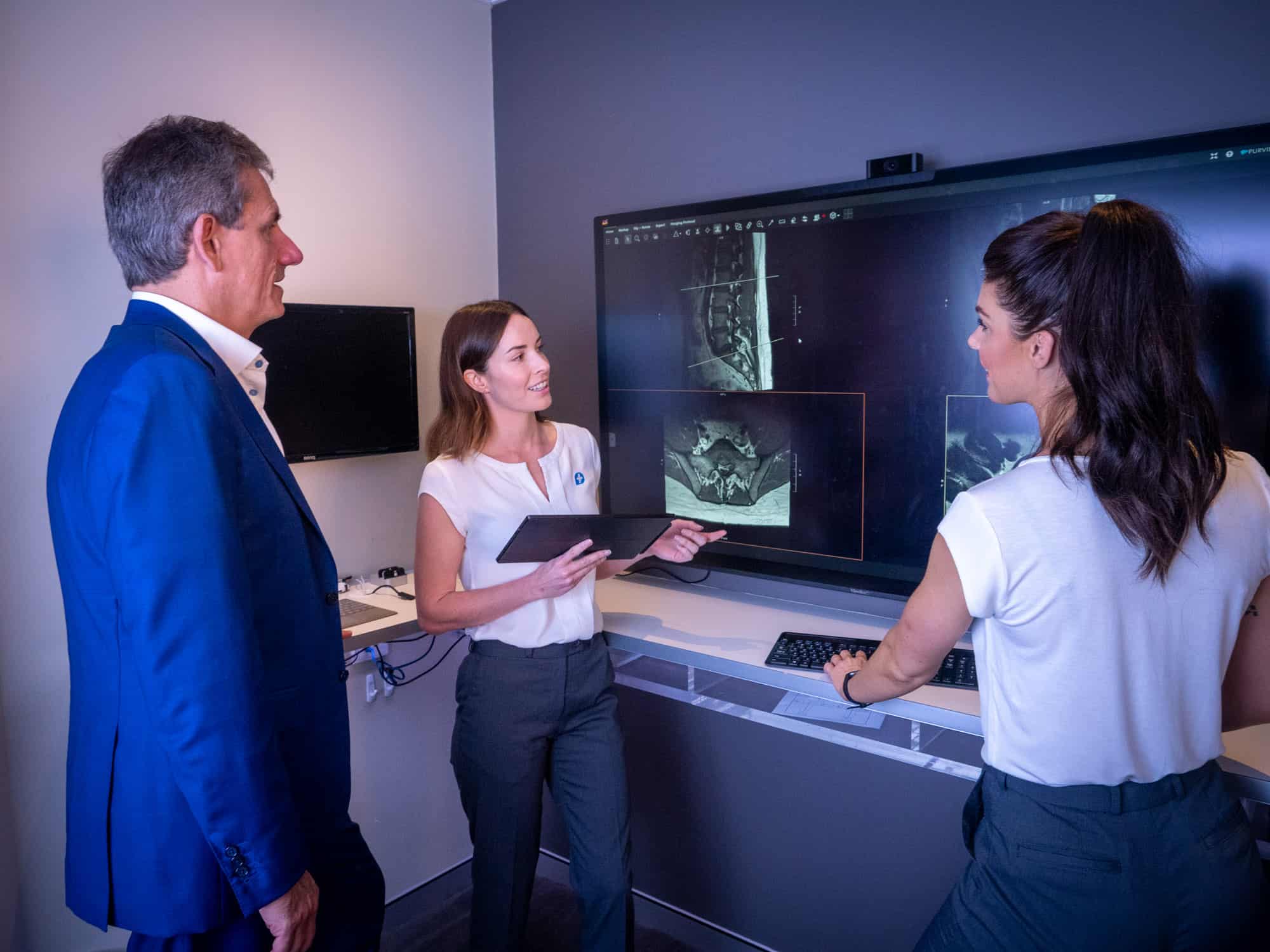Research
Dr Licina supervises a diverse team of researchers who dedicate their time to investigating a broad spectrum of spine related topics, ranging from surgical techniques and products to rehabilitation and outcomes.
Past Projects (Selected)
Barricaid annular closure device
The aim of this study was to investigate the safety and efficacy of the Barricaid annular closure device. This device was purported to prevent recurrent disc prolapse in patients with a large annular defect, however our study deemed it to be ineffective in reducing recurrence and subsequently revision surgery rate for discectomy patients.

Bone graft substitutes
Lumbar interbody fusion using bone substitutes is a common procedure and a number of bone graft substitutes are now available. The aim of this study was to evaluate the clinical and radiological effectiveness of three such bone graft substitutes to determine whether there was a clear superior product. Our study found that BonAlive® putty MIS (BonAlive® Biomaterials Ltd., Turku, Finland), NanoBone® SBX putty (Artoss GmbH, Rostock, Germany) and Actifuse (Baxter, Unterschleißheim, Germany) all exhibit radiological results and patient reported outcomes.
Cortical pedicle screw technique
The use of cortical bone trajectory screws for posterior lumbar interbody fusion has been shown to have a number of potential advantages over the traditional pedicle screw trajectory. These include decreased muscle dissection and wound size (1), shorter operative time (2) and reduced length of hospital stay (3). However, it is a relatively new concept and involves a surgical learning curve. The purpose of this study was to compare the intraoperative results and the short-term postoperative patient outcomes for the cortical and the traditional pedicle screw technique for lumbar interbody fusion. Results showed that the cortical technique offers a smaller wound, shorter hospital stay and improved early patient satisfaction, but the benefits are subtle.


Current projects
Bracing for pars defects in adolescents
Adolescent sporting activity predisposes to lumbar bone stress injury of the vertebral pars interarticularis or pedicle (pars bone stress injury) and is the primary cause of significant adolescent low back pain. Rigid bracing has been proposed as a treatment method for acute lesions. Bracing not only relieves pain, but increases the likelihood of bony healing, thereby reducing the risk of delayed bony union or non-union and progression to isthmic spondylolisthesis. The objective of this study is to evaluate bony healing rates after twelve weeks of rigid lumbo-sacral orthosis in individuals with pars bone stress injury. Preliminary results for this study have been very promising.
Development of a Functional Assessment tool
Our research group have found that patients undergoing lumbar fusion surgery for degenerative lumbar spine conditions exhibit significant functional limitations prior to surgery. Specifically, patients show limitations in strength, balance, and flexibility. In order to assess these deficits more objectively, the research team have developed a new functional assessment battery which will quantitatively measure functional improvement over time to provide clinicians and patients with accurate measures of function throughout their recovery. The functional assessment tool is currently being administered by allied health clinicians during pre-operative and 6 week and 6 month post-operative appointments.

Validation of a spine outpatient triage system
In Australia, low back pain (LBP) is the most common musculoskeletal condition for which patients consult general practitioners. Those who fail to improve in a timely fashion, or present with significant neurological involvement, are often referred onto a spine surgeon. The sheer volume of these referrals results in longer waiting times for suitable and unsuitable surgical candidates and prolonged access to appropriate treatment. The implementation of a triage program reduces consultation wait times, ensures that patients requiring urgent review are seen promptly and limits unnecessary costs associated with multiple specialist consultations. Triage is also seen to greatly improve health outcomes including health related quality of life, pain-related disability and patient satisfaction. Our triage system is based on current literature and clinical experience, however, to ensure that our triage is as effective as possible, the research team collects and analyses wait times, referral numbers, patient and practitioner satisfaction and selection accuracy. Currently, patient satisfaction among patients is recorded at 97%, selection accuracy is in the realm of 85% and the rate of identifying patients that need surgery is recorded at 41% (compared with 10% in untriaged neurosurgeon and orthopedic surgeon clinics).

Assessment of effectiveness of ReActiv8 muscle neurostimulation system
Chronic low back pain is associated with functional instability of the lumbar spine that results from impaired motor control and atrophy of the multifidus muscle. Chronic low back pain limits a person’s functional ability, physical activity and wellbeing. The ReActiv8 system is an implantable neurostimulation system that targets the multifidus muscle and is intended to treat chronic mechanical low back pain. In previous research, ReActiv8 has shown preliminary efficacy, however, the individual mechanisms that can restore the multifidus muscle at a functional and biological level require further exploration. Therefore, the aim of this observational study is to evaluate changes in a) multifidus morphology, b) patient function and physical activity and c) patient-reported outcomes (PROMs) in patients eligible for ReActiv8.
Biospsychosocial rehabilitation following spine surgery
Pre-operative anxiety, depression and kinesiophobia are associated with poorer post-operative recovery. Previous research has related mood disorders and kinesiophobia with increased disability, pain and reduced functional capacity in patients undergoing spine surgery. Current rehabilitation practices concentrate on physical recovery, neglecting to consider the dynamic interaction between biological, psychological and socio-environmental factors. The purpose of this study is to determine the short-term efficacy of biopsychosocial rehabilitation, compared to physiotherapy alone, in surgery patients with symptoms of anxiety, depression and kinesiophobia pre-operatively.